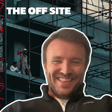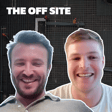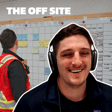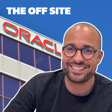
Tunnel Engineering Breakthroughs: Inside Toulouse's Metro Line C Expansion
Join Jason and Carlos in this episode of The Off Site Podcast as they explore three new topics from the world of construction:
🚇 Toulouse Metro Line C Expansion: A €3.4 billion project using innovative variable density tunnel boring machines to create a 27km line with 21 stations, combining underground tunnels and elevated viaduct sections scheduled for completion by 2028.
💻 Autodesk's Restructuring: The tech giant lays off 1,350 employees (9%) as it shifts from a sales-led approach to a self-serve model, focusing on cloud, AI and core software in response to increasing market competition.
🏗️ Software and Competitive Advantage: The hosts debate whether construction software provides real competitive advantage when widely adopted across the industry, or if it simply becomes a necessary "tax" for staying in the game. Key Timestamps:
00:00 - Introduction
03:20 - Toulouse Metro Project
14:30 - Autodesk Restructuring
24:32 - Software & Competitive Advantage
Check out the Off Site newsletter here
Follow Carlos on Linkedin | Follow Jason on Linkedin | Check out Aphex



















